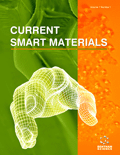Abstract
Background: Materials like ZnO, TiOx, ZnS have wide applications in energy technology especially in device and sensor applications. Determination of mechanical properties like hardness, toughness and adhesion of these materials deposited in the form of thin films is possible through nanoindentation and scratch test. The assessment of these mechanical properties improves the quality of application of the oxide and sulphide thin films in energy devices.
Methods: Nanoindentation is a type of indentation where the indenter size is of nanometric order. It is a depth sensing indentation based upon continuous stiffness mode (CSM). The analysis includes fitting the load depth curve obtained with a power law equation developed by Oliver and Pharr. The area under the load depth curve gives the plastic energy. Indentation at higher loads leads to crack formations which are used in studying the toughness of the sample. The initiation and propagation of cracks are the two most important aspects of indentation fracture mechanics. The nature of the cracks varied from radial, lateral to ring like. Scratch tests with a ramping load are used to assess the adhesion of the coating with the substrate. The load at which the coating fails is called the critical load (Lc). The nature of failure occurring in the scratch track is again related to a combination of coating and substrate hardness. Results: We approached the failure in terms of deconvoluting the failure region into geometrical cardioid shapes with delaminated region deconvoluted into three geometric cardioids with cusp meeting with indenter corner. The crack and delaminated area dimensions give us the deamination aspect ratio, shape factor and crack growth rate. The penetration depth during scratch and after load removal indicates elastic recovery of the sample. The optical picture of the scratched region indicates chevron cracks. Conclusion: A novel method of deconvoluting the failure region surrounding nanoindentation with geometrical shapes was introduced. The nature of film and substrate was found to have effect over sink in and pile up effect during nanoindentation. The chevron cracks during scratch tests are through thickness cracks 45° to the scratch direction and indicate cohesive failure of the coating before adhesive failure.Keywords: Cracks, energy devices, film failure, fracture, nanoindentation, scratch tests.
Graphical Abstract
 23
23




